Common name: Parakeet, Budgerigar, Budgie
Latin name: Melopsittacus undulatus
Group name: Flock, Pandemonium, Company
Diet: Granivore
Adult size: 7 inches long
Adult weight: 1.1-1.4 ounces
Life expectancy: 5-10 years
Color: Green, yellow, blue & more
Sounds: Vocal communicator
Interaction: Very social
Diet: Seeds, fruits, vegetables, legumes, nuts, pellets
Origins: Australia

If you’ve ever wanted to become a pet parakeet parent, you should know that the task comes with a lot of responsibility.
Getting informed about the species, its diet, its social needs, and a variety of other things can help you understand whether it’s the right pet for you or not.
In this post, we’ll cover most of the basics you should know from what types of parakeets there are in the world to how to take care of parakeets so that they’re happy and healthy.
Table of contents
- Parakeet
- Origin and history
- Native region and natural habitat
- Temperament and personality
- Behavior and training
- Exercise
- Speech and vocalization
- Characteristics and colors
- Parakeet care
- Diet and nutrition
- Health and common conditions
- Parakeet as a pet
Parakeet
One of the first budgie facts that you should learn is that the name ‘parakeet’ is a generic one for several different species of birds.
Out of these, the most popular one is the budgerigar, for a number of different reasons.
On the one hand, parakeets are a lot easier to care for compared to other birds, both in terms of diet necessities and in terms of what you’re going to spend on their cage and accessories.
They do have a share of needs that you need to address, but they’re considered low-maintenance pet birds.
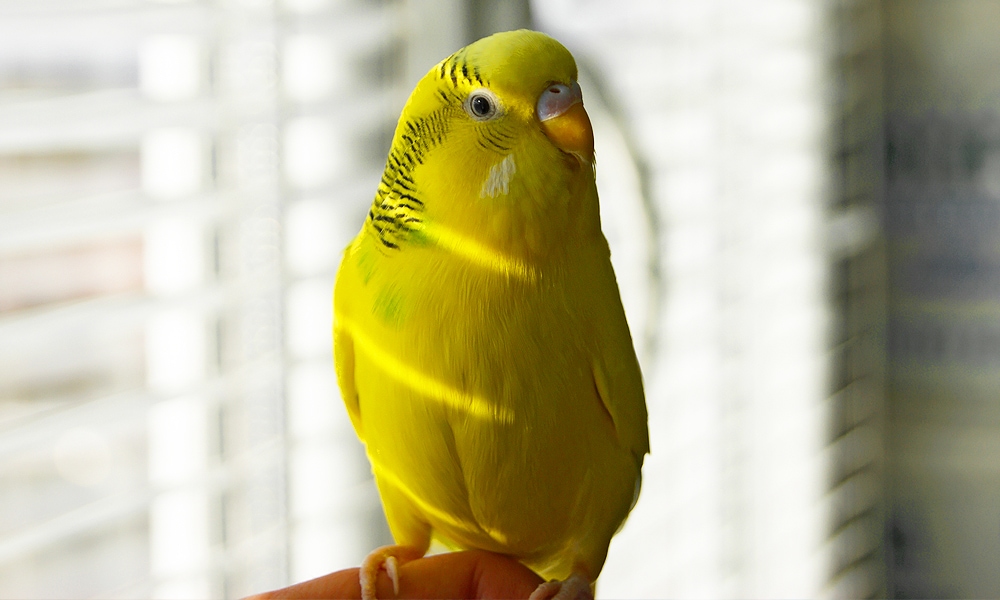
Another aspect that makes them such popular pets is that they can be taught how to speak.
Some of them might not be able to do this, but there are many that can mimic sounds, words, or even phrases if they are trained to do this since they were young.
Parakeets are very social and enjoy spending time in the company of both humans and another friend from the same species. That’s why most of the time, they are adopted in pairs.
While the budgie is considered a docile pet bird, it appears that the English Budgerigar is calmer when compared to the American Parakeet. (1)
Origin and history
Is a budgie a parakeet? Yes, it is part of the large parakeet family, but not all parakeets are budgies. Also, not all budgies are pets.
There are free-ranging budgies that live in large groups in open grassland and woodlands of Australia and Tasmania.
The budgerigar is native to Australia. This is where the birds were first spotted sometime in the 1800s. They were recorded as a species in 1805 by George Shaw, who worked at the British Museum’s Natural History department.
John Gould, a passionate bird enthusiast, wrote a book called ‘Birds of Australia’, where he made a detailed description of budgerigars.
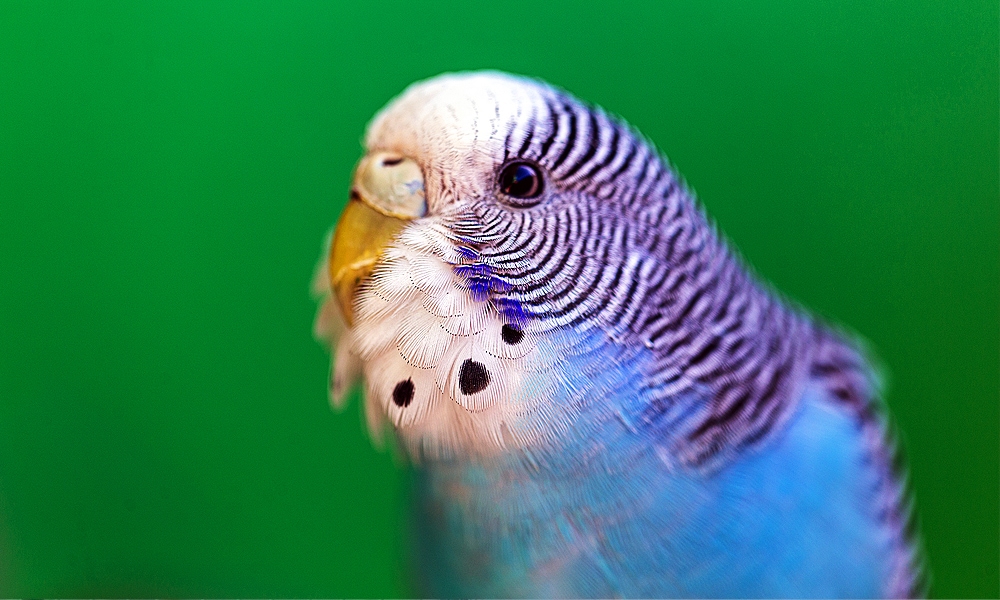
He was the first person to bring several parakeets with him on his journey back to England.
This was when budgies started being bred in captivity, with John Gould’s brother selling a pair in the first part of the 19th century for the equivalent of several hundreds of dollars in today’s money.
Budgies became popular pet birds, so much so that even Queen Victoria was gifted a pair in 1845.
However, because they became so scarce in Australia, the country banned the export of parakeets. That is why all of those that you get to see in pet shops nowadays are from captive stock. (2)
Native region and natural habitat
There are several parakeet habitats across the world, as the parakeet species encompasses over 100 types of different birds.
From a taxonomical standpoint, there are parakeets everywhere from South Africa and Central America to the Middle East.
However, budgerigar birds hail from Australia, where they tend to live in grasslands. What’s interesting about this bird is that while it loves to fly and socialize with others, it doesn’t make nests.
Instead, a budgie usually takes cover in a hollow cavity that already exists in a tree.
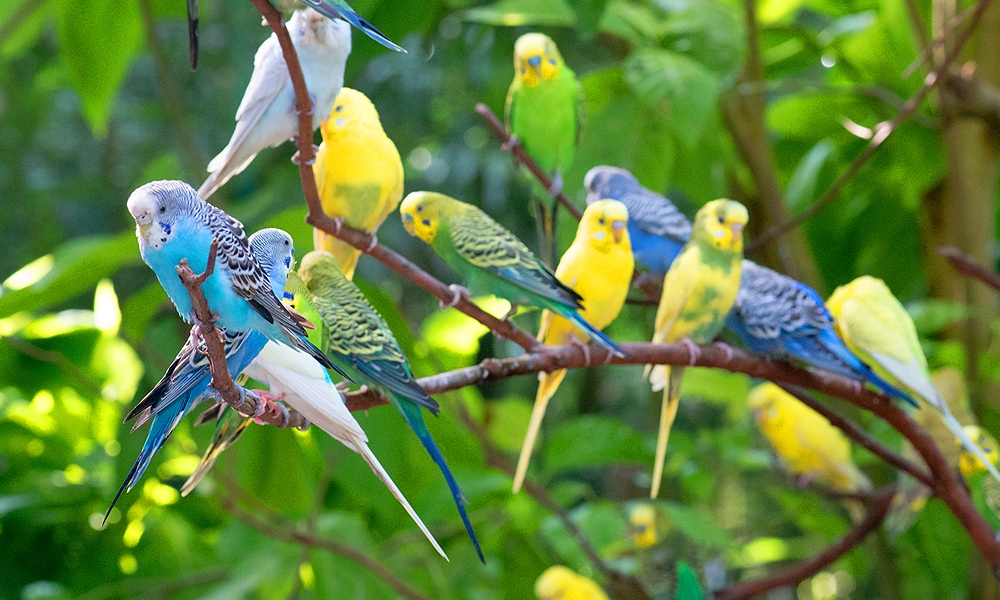
Besides the grasslands, budgies also live in the desert and woodlands.
If they can’t find any food in their habitat, they can move into the city, where they are found to eat anything from grass seeds to fruits and veggies and even insects, if they have to.
It is not uncommon for some types of parakeets to escape and start living in the wild as if they were never pet birds at all.
That happens in Australia, whose environment they are naturally designed for, but it has been found to happen in other warm places across the globe.
Temperament and personality
Another piece of parakeets information that should be of interest to you is whether a budgie is compatible with you in terms of temperament.
If you’re looking for a pet bird that doesn’t pose too many difficulties and that is great for kids, too, a parakeet might make the best choice.
Budgies are usually docile and gentle, although they can get upset once in a while.
There have been cases of people being bitten by budgies, but this is usually the result of a mishap like you taking the bird out of the cage too fast, grabbing it too enthusiastically, or other such events.
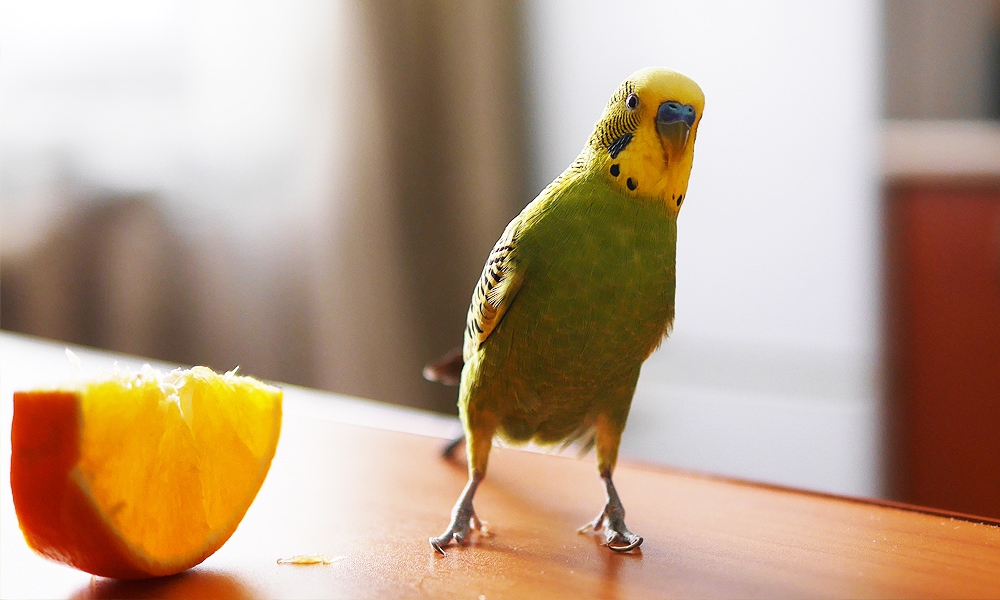
In general, budgies are easy to tame, too, especially if they are adopted early in their life.
Moreover, they are usually happy, they chirp, and they sing, and they have a lot of energy, especially when they are fed the right diet.
Parakeets can also be active and playful, but their personality also varies from one bird to the next. There can be some that are quieter, although not usually when they live in pairs.
On the whole, though, budgies tend to make less noise than other types of parrots and they also fall asleep easier at night.
Behavior and training
Becoming acquainted with and teaching a budgie bird is far easier and more effective when it is done while the parakeet is still young.
These pet birds are capable of learning how to speak before they reach the age of 1, but teaching them, later on, is very challenging.
There are lots of parakeets behaviors you will learn, as well, but when it comes to training, you should have a routine or a plan in place.
Most pet bird parents find that teaching their budgies how to speak is more effective when done in the morning since the bird is well-rested then.
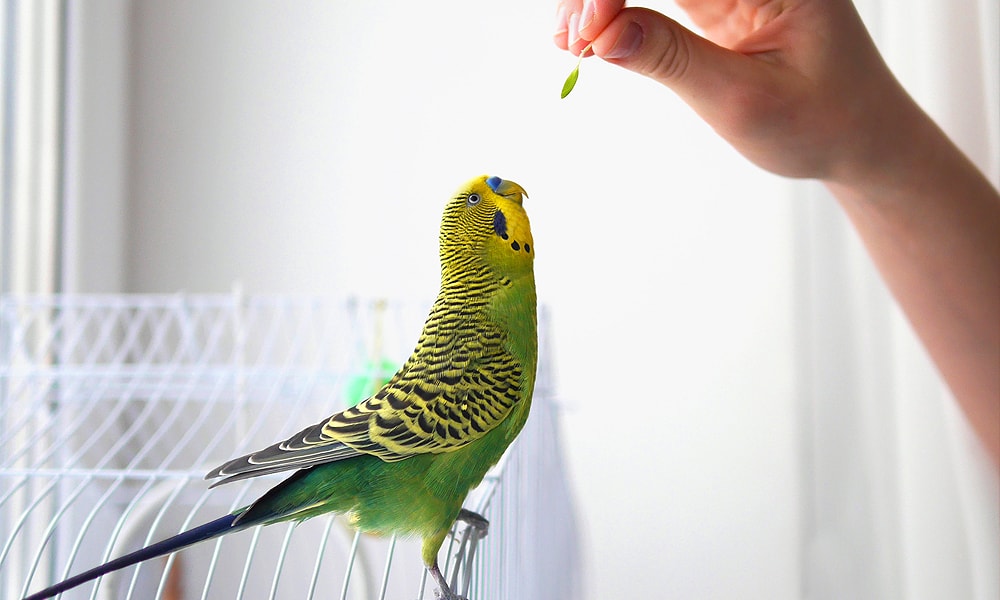
Consistency is the key when it comes to teaching your budgie to talk.
Another thing that you can do is to finger or perch train your budgie or teach your parakeet new tricks, like riding on your shoulder, playing ‘dead bird,’ or exploring your pockets. (3)
How do parakeets sleep? In this case, too, you can make some adjustments. If you need your parakeet pair to be quiet during the night, you can cover the cage with a cloth.
Do make sure that it still lets enough air to flow in, though. Most budgies learn to fall asleep in the evening if you do this time and again.
Exercise
Do parakeets need to be let out of their cage?
While this is not something that you simply must do, it’s far better to get your budgie acquainted with their living environment rather than to let them stay cooped up in the cage all day long.
If you’ve already adopted a budgerigar, you might have noticed that it is very active.
That’s why it’s highly recommended that you get a number of parakeet accessories that can provide both entertainment and a little variety in terms of exercise.
Most parakeets love to hop on different perches, use a swing, talk to their pair, or look in the mirror if they are alone.
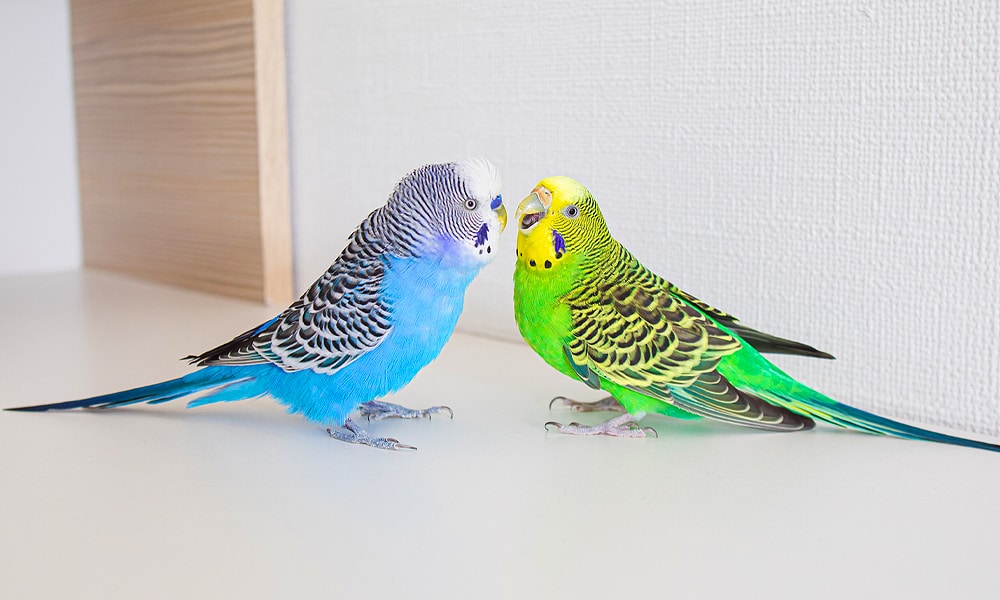
If you want to leave your parakeets to explore your home, make sure that it is a completely safe space, without any open drawers or cabinets where the birds might get in and not be able to get out of. (4)
Avoid keeping your windows or door open when you leave your parakeet bird to explore around the house.
Not many of those that manage to escape come back, especially if they haven’t had enough time to interact with their owners and bond with them.
Preventing escapes is even more important if you live in an area with a cold climate, as budgies don’t do well in low temperatures.
Speech and vocalization
They sure do, both with their human friends and with their pair. Some say they are noisy birds, but they’re quiet compared to other pet bird species.
At what age do parakeets start talking?
If by ‘talking’ we’re referring to mimicking sounds and words that we, people, use, a budgie usually begins to speak by the age of 1.
However, speaking among themselves is done through whistling, chirping, chattering, hissing, and even downright screaming.
Clicking is another rather common sound that parakeets pet birds can make and it’s usually a sign that the bird is feeling happy.
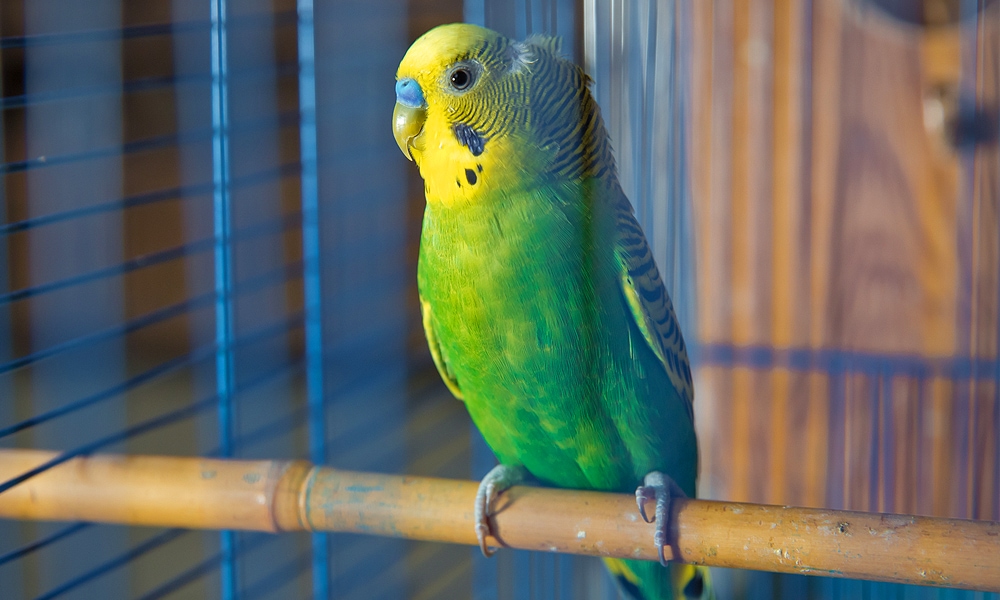
Budgies can also tweet, especially when they feel like they need some attention, whether from you or their pair.
Does talking to your bird do anything for it? Yes. If for some reason or the other, you have adopted just one budgie, it is necessary for you to interact with it as often as possible.
Even though it sounds weird, it’s good to talk and whistle to your budgie parakeet.
Socializing is extremely important for the bird, so if you can, use positive reinforcement as often as possible, especially if you notice that your budgie starts to learn how to talk.
Characteristics and colors
When it comes to the standard parakeet size, most birds don’t grow for more than 7 inches in length when they reach adulthood.
A budgie usually weighs anything between 0.9 and 1.4 ounces, so it can be considered a small parakeet, compared to other types within the same family.
In terms of its body characteristics and parakeet colors, there is a lot of variety out there.
The typical budgie parakeet, which is native to Australia, has a yellow head and a green body, covered with several dark markings.
There are some differences in terms of the tone, too.
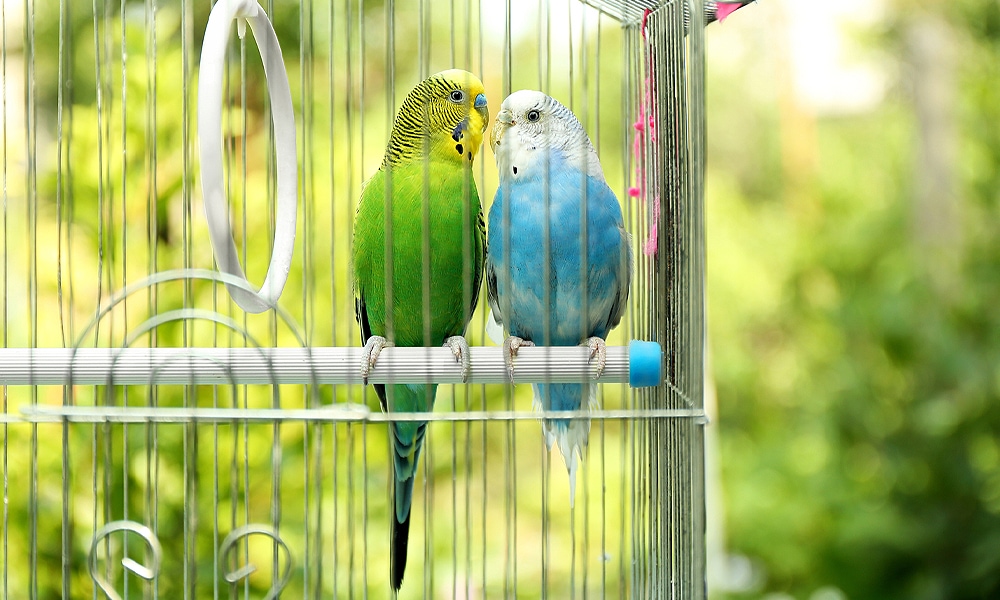
Budgies can be light green, dark green, olive, or grey-green. Those that are blue can be cobalt, sky-blue, mauve, or grey, but also violet.
As you can see, there is a lot of diversity, and breeders can come up with new combinations.
Males and females have a significant body particularity, which is used to make the difference between them.
Their cere differs in terms of color, with that of females having a tan or brown one and that of males being blue.
What is the maximum parakeets age that most birds can reach? Most budgies live for up to a decade, so when you’re getting a pair, you’re making a long-term commitment to them.
Also read: 12 Most Colorful Parrot Species in the World
Care for parakeet
The basics of parakeet care that you should know involve the birds’ feeding and watering necessities, housing, accessories, toys, and a variety of such gear.
Keeping parakeets as pets isn’t extremely challenging, but it does require devotion and attention.
When it comes to the cage that you need to keep just one budgie as a pet, it should measure at least 18 inches in width, 18 inches in depth, and 18 inches in height.
2 birds need a cage that is at least 21 inches in width, depth, and height, but the ideal size would be 35-36 inches in all of those measurements.
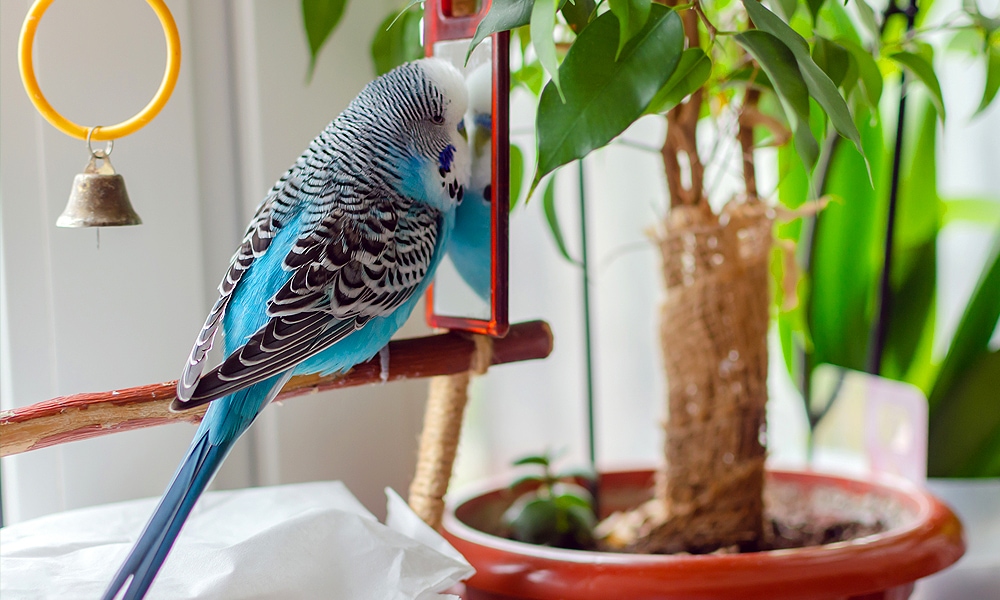
Once you have bought the correct cage, you should get a number of accessories, too. Here are several examples:
Pet birds can get bored and lonely, too, and they can be stressed if they don’t have any means of entertainment.
You could get a set of toys from a site like Chewy.com, for example, containing a dozen different toys. Rotate them every couple of days so that your budgies don’t get bored of them.
Clean their food and water bowls every day, change their water daily, and thoroughly clean their cage every week.
Otherwise, they can be exposed to a number of bacteria in their droppings and risk becoming sick.
Diet and nutrition
A parakeet in the wild has a varied diet composed of seeds, grains, and even legumes, vegetables, and fruit if nothing else is available.
Some are known to even eat insects if they really have no other options.
When they are kept as pet birds, budgies need the same variety. But in this case, it’s your responsibility to properly feed your parakeet, not his or her own.
Seeds, pellets, and grains should make up the majority of a parakeet’s diet, but here is a complete breakdown of what this type of bird needs to be happy and healthy. (5)
- Veggies and fruit – up to 20%
- Protein from legumes – up to 20%
- Seeds, pellets, grains – up to 70%
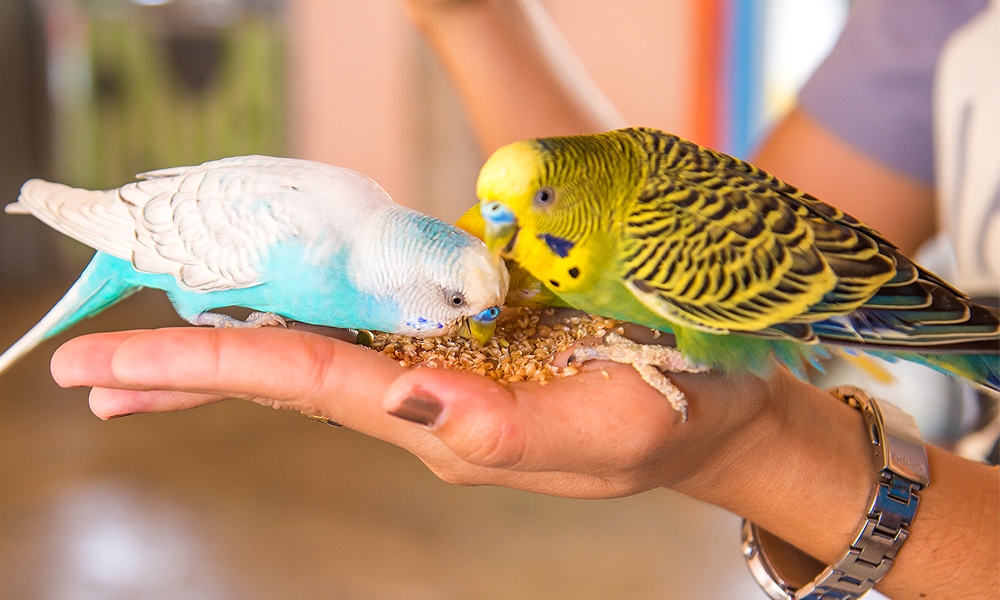
As for supplements, it is a good idea to add one containing vitamin A, D3, and E, especially while the parakeet is still growing up.
These three vitamins are essential for general health and for preventing calcium deficiencies.
If you ever run out of parakeet food in the house, you should know that some human foods are not safe to feed to your pet bird.
These range from avocados to chocolate, but there are many more that can be included on the list. (6)
Health and common conditions
The parakeet species can suffer from illnesses just like any other mammals or birds.
There are many parakeet diseases that can affect budgerigars, with some of them being contagious and others being the result of poor nutrition, intoxication, and a variety of other factors.
Some of the most common infectious illnesses that affect budgies are the following:
- Salmonella
- Sour crop
- Polyomavirus
- Candidiasis
These conditions can be passed on from an infected parakeet to a healthy one, especially if they share the same living space.
Polyomavirus mostly affects young budgies, whereas yeast infections, such as Candidiasis, can affect parakeets of all ages.
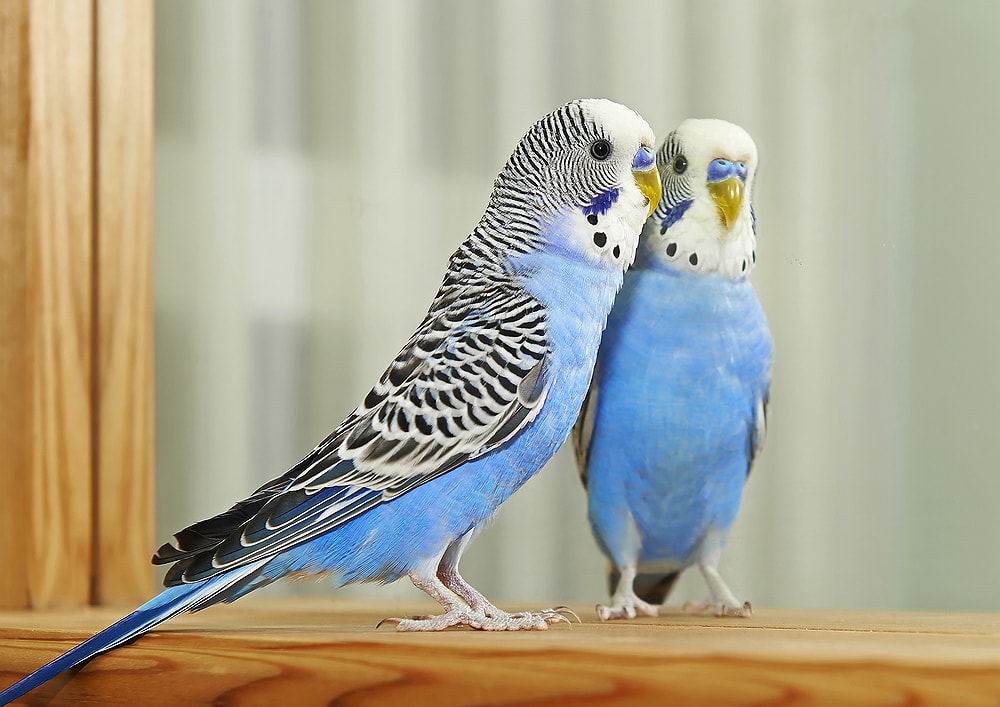
Sour crop is a parakeet disease that can be developed due to vegetables and fruit not being washed properly or containing traces of pesticides.
Birds that have this disease experience a loss of appetite, depression, a dirty beak, as well as purple skin. The condition is often fatal and most parakeets die within 5 days.
Budgies can also have mites and a variety of other parasites, including intestinal ones. On top of that, there are medical conditions that can be passed on to humans, such as parakeet fever.
It’s not uncommon for parakeets to experience the same health problems as people, from diarrhea and colds to constipation and fatty liver disease.
If you notice any worrying symptom whatsoever, whether lethargy, lack of grooming, lack of appetite, or poor feather condition, you should take your pet bird to an avian vet as soon as possible. (7)
Parakeet as a pet
Keeping a parakeet as a pet is a responsibility that not everyone can handle. You need to be focused on keeping your pet bird happy and healthy in the long run.
Since most budgies are known to live up to a decade, this is a long-term commitment you are making.
If you don’t have enough time for the task, it’s better to get an even lower maintenance pet.
With parakeets, you always have to pay attention to how they look and how they behave just to make sure that there isn’t some health condition you might not have noticed.
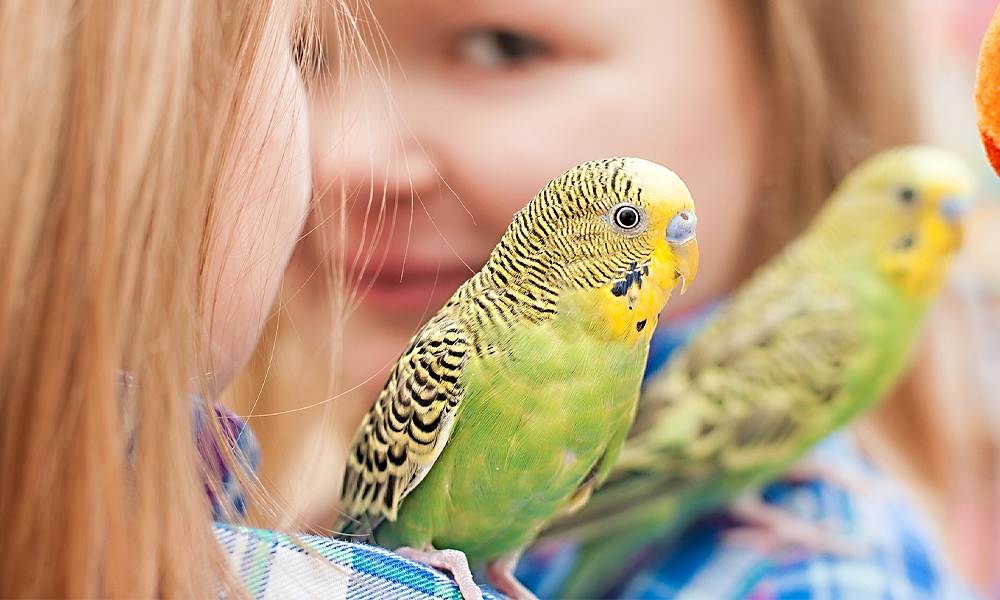
Other than that, budgies make great pets as they are friendly, mostly well-behaved, and very sociable.
If you train your budgies when they are young, they can learn how to talk or do tricks, and they can make fast friends with kids, too.
Before deciding to acquire a pair of budgies, try to do as much research about their needs as possible.
This will assist you in telling whether they are a suitable option in terms of pets for the amount of time you have available and for the investments you must make in terms of anything from housing to food, treats, and toys.

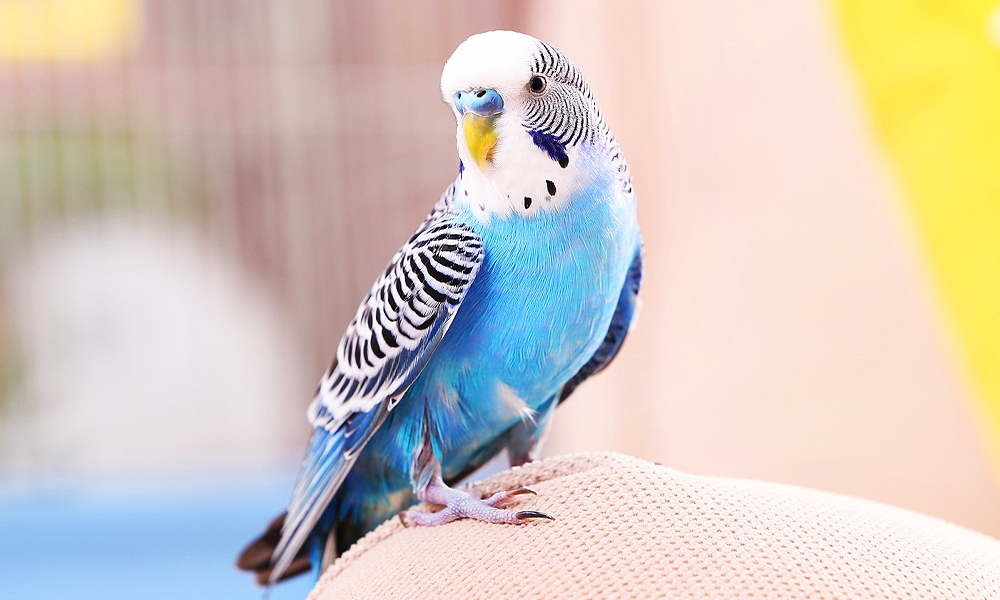
I have two budgies that are 6 mos. old. I have only have them for two mos. One is friendlier than the other, but they will not let me near them. I put my finger in the cage and they fly away like crazy. I need instructions on how to approach them. I talk to them constantly but so far nothing, as trying to speak. Any suggestions would be helpful. Thank you.